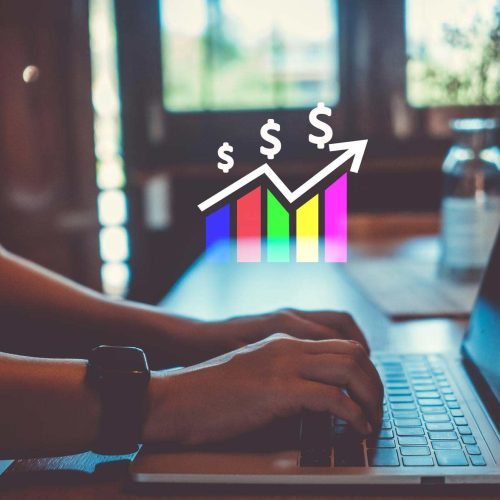Have you ever thought about how paid traffic can boost your business? If not, then it’s time to find out! In this comprehensive guide, we’ll explore how paid traffic works and how you can use it to increase your company’s visibility and boost sales.
Paid traffic refers to the process of investing in online advertising to drive qualified traffic to your website. Unlike organic traffic, paid traffic involves paying for advertisements to ensure that your website is displayed in privileged positions in search engines or on social networks.
In this guide, we’ll cover the different forms of paid traffic, from paid ads on search engines, such as Google Ads, to advertising on social networks, such as Facebook Ads and Instagram Ads. In addition, we’ll discuss the most effective strategies for optimizing your ads and maximizing your return on investment.
If you’re looking for a quick and effective way to boost the growth of your online business, paid traffic could be the solution. So read on to find out how you can start harnessing the full potential of paid traffic to boost the success of your business.
Introduction to paid traffic
Paid traffic is a digital marketing strategy that involves investing in online advertising to drive qualified traffic to your website. Unlike organic traffic, which involves SEO techniques and the creation of relevant content to attract visitors organically, paid traffic consists of paying for your ads to be displayed in privileged positions on search engines or social networks.
There are different forms of paid traffic, such as paid ads on search engines, like Google Ads, and advertising on social networks, like Facebook Ads and Instagram Ads. Each type of paid traffic has its own characteristics and advantages, and it’s important to understand the differences in order to choose the most suitable strategy for your business.
Paid traffic offers a number of benefits for companies. By investing in online advertising, you can increase your brand’s visibility, reach a larger audience and drive qualified traffic to your website. In addition, paid traffic allows you to segment your target audience based on interests, behaviors and demographic characteristics, which increases the chances of converting visitors into customers.
Understanding PPC (Pay-Per-Click) advertising
One of the most common forms of paid traffic is PPC advertising, or Pay-Per-Click. In this model, you only pay when a user clicks on your ad, which means you only pay for the results obtained.
To set up a PPC campaign, you need to select the keywords relevant to your business and create ads that will be displayed when these keywords are searched. By setting a daily or monthly budget for your campaign, you limit your advertising spend and ensure that your ad is only shown within the set amount.
It’s important to carry out keyword research to identify which terms are most relevant to your business and have the greatest potential to generate clicks and conversions. In addition, it is essential to monitor and optimize your PPC campaign regularly to ensure that you are getting the maximum return on investment.
Setting up a PPC campaign
When setting up a PPC campaign, it is essential to define your objectives and target audience. What results do you want to achieve with your campaign? Who is your target audience and what are their interests?
Based on this information, you can choose the keywords that are relevant to your business and create attractive ads that attract the attention of your target audience. It’s important to write persuasive headlines and descriptions, highlighting the benefits of your product or service and encouraging users to click on your ad.
In addition, it is essential to target your campaign based on demographic, geographic and behavioral criteria. This will ensure that your ad is only shown to users who are most likely to be interested in your product or service.
How to target the right audience for your paid traffic campaign
The first step to a successful paid traffic campaign is to target the right audience for your website. After all, what’s the point of investing in ads if they aren’t shown to the people who are most likely to be interested in your product or service?
One of the most effective ways of targeting the right audience is through keywords. By choosing the right keywords for your ads, you ensure that your website is shown to people who are actively looking for what you offer. For example, if you sell maternity clothes, you can choose keywords such as “maternity clothes”, “clothes for pregnant women” and so on.
In addition, you can also segment your target audience based on demographics, interests and behaviors. For example, if you’re promoting a digital marketing course, you can target people with an interest in marketing, entrepreneurship and business. In this way, you ensure that your ads are shown to people who are most likely to be interested in your course.
Correct audience segmentation is essential for maximizing the return on investment in paid traffic. So take the time to research and identify the right audience for your campaign before you start investing in ads.
How to optimize your landing pages for paid traffic
Once you have targeted the right audience for your paid traffic campaign, the next step is to optimize your landing pages to convert visitors into customers.
The first thing to consider is the relevance between your ad and your landing page. Make sure that the message and offer of the ad are consistent with the content of the landing page. This will help create a cohesive experience for the user, increasing the chances of conversion.
Also, make sure that your landing page is easy to navigate and that the user can easily find the information they are looking for. A confusing or disorganized landing page can lead to user frustration and site abandonment.
Another important aspect of landing page optimization is responsive design. With the increased use of mobile devices, it is crucial to ensure that your landing page is compatible with smartphones and tablets.
This will ensure that users have a seamless experience, regardless of the device they are using.
Finally, don’t forget to include a clear and convincing call to action on your landing page. This will encourage visitors to take the desired action, whether it’s making a purchase, filling in a contact form or subscribing to a newsletter.
By optimizing your landing pages for paid traffic, you significantly increase your chances of converting visitors into customers. So don’t ignore this crucial aspect of your paid traffic campaign.
How to monitor and analyze the results of paid traffic
Monitoring and analyzing the results of paid traffic is fundamental to the success of your campaign. After all, how can you know if your ads are working if you don’t monitor and evaluate the results?
There are several metrics you can track to assess the performance of your paid traffic campaign. Some of the most important include click-through rate (CTR), conversion rate, cost per click (CPC) and return on investment (ROI).
The click-through rate (CTR) indicates the percentage of people who clicked on your ad in relation to the total number of impressions. A high CTR usually indicates that your ad is catching the public’s attention and generating interest.
The conversion rate, on the other hand, measures the percentage of visitors who take the desired action, such as making a purchase or filling in a form. A high conversion rate indicates that your landing page and ad are effectively persuading visitors to take the desired action.
The cost per click (CPC) represents the average amount you pay for each click on your ad. A low CPC rate indicates that you are getting good value for your investment in paid traffic.
Finally, return on investment (ROI) is a metric that indicates the financial return you have obtained in relation to the amount you have invested in paid traffic. A positive ROI means that you are making a profit from your ads, while a negative ROI indicates that you are losing money.
By regularly monitoring and analyzing these metrics, you’ll be able to identify what’s working and what’s not in your paid traffic campaign. Based on these insights, you can make adjustments and optimizations to maximize the performance of your ads and get better results.
Common mistakes to avoid in paid traffic campaigns
While paid traffic can be a powerful strategy for boosting the growth of your business, there are also some common mistakes you should avoid to ensure the success of your campaign.
One of the most common mistakes is not setting an adequate budget for your paid traffic campaign. It’s important to bear in mind that not every click or impression on your ads will result in immediate sales. It is therefore essential to set a realistic budget that allows you to test and optimize your campaign over time.
Another common mistake is not regularly monitoring and analyzing the results of your campaign. As mentioned earlier, monitoring and analyzing the relevant metrics is key to identifying what’s working and what’s not. Without this analysis, you won’t have the insights to improve your performance and maximize your return on investment.
In addition, companies often make the mistake of not correctly segmenting their target audience. It’s important to remember that not everyone is a potential customer for your business. Therefore, it is essential to segment your target audience based on demographic data, interests and behaviors to ensure that your ads are shown to the right people.
Finally, another common mistake is not optimizing landing pages properly. As discussed earlier, landing pages play a crucial role in converting visitors into customers.It is therefore essential to optimize your landing pages to ensure a seamless experience and persuade visitors to take the desired action.
By avoiding these common mistakes, you significantly increase the chances of success for your paid traffic campaign. So be aware of these pitfalls and make the necessary adjustments to maximize your results.
Conclusion and final considerations
Paid traffic can be a powerful tool for boosting the growth of your online business. By investing in ads, you can target the right audience for your business, increase your website’s visibility and boost sales.
In this comprehensive guide, we explore different forms of paid traffic, from paid ads on search engines, such as Google Ads, to advertising on social networks, such as Facebook Ads and Instagram Ads. In addition, we discuss effective strategies for optimizing your ads and maximizing your return on investment.
Remember that targeting the right audience for your paid traffic campaign, optimizing your landing pages, monitoring and analysing the results and avoiding common mistakes are all essential aspects for the success of your campaign.
So if you’re looking for a quick and effective way to boost the growth of your online business, paid traffic could be the solution. Follow the strategies and tips presented in this guide and start harnessing the full potential of paid traffic to boost your company’s success.









